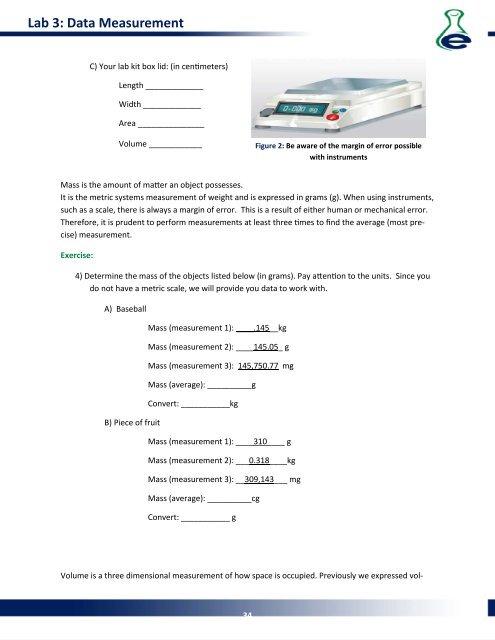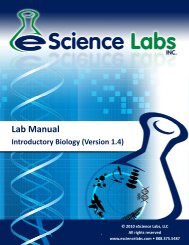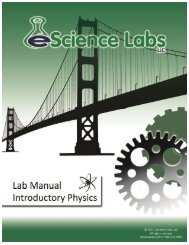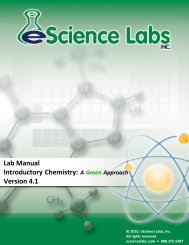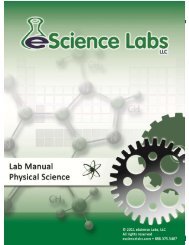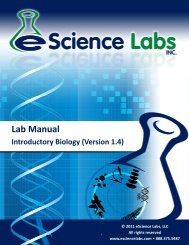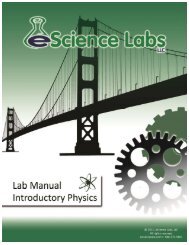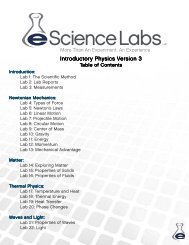Lab Manual - eScience Labs
Lab Manual - eScience Labs
Lab Manual - eScience Labs
You also want an ePaper? Increase the reach of your titles
YUMPU automatically turns print PDFs into web optimized ePapers that Google loves.
<strong>Lab</strong> 3: Data Measurement<br />
C) Your lab kit box lid: (in cenmeters)<br />
Length _____________<br />
Width _____________<br />
Area _______________<br />
Volume ____________<br />
Figure 2: Be aware of the margin of error possible<br />
with instruments<br />
Mass is the amount of maer an object possesses.<br />
It is the metric systems measurement of weight and is expressed in grams (g). When using instruments,<br />
such as a scale, there is always a margin of error. This is a result of either human or mechanical error.<br />
Therefore, it is prudent to perform measurements at least three mes to find the average (most precise)<br />
measurement.<br />
Exercise:<br />
4) Determine the mass of the objects listed below (in grams). Pay aenon to the units. Since you<br />
do not have a metric scale, we will provide you data to work with.<br />
A) Baseball<br />
B) Piece of fruit<br />
Mass (measurement 1): ____.145__kg<br />
Mass (measurement 2): ____145.05_ g<br />
Mass (measurement 3): 145,750.77 mg<br />
Mass (average): __________g<br />
Convert: ___________kg<br />
Mass (measurement 1): ____310____ g<br />
Mass (measurement 2): ___0.318____kg<br />
Mass (measurement 3): __309,143___ mg<br />
Mass (average): __________cg<br />
Convert: ___________ g<br />
Volume is a three dimensional measurement of how space is occupied. Previously we expressed vol-<br />
34


